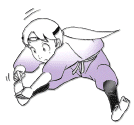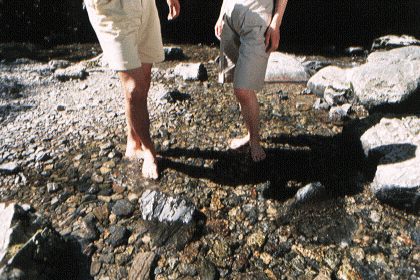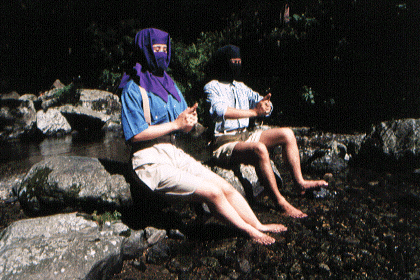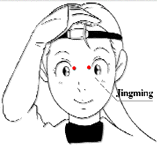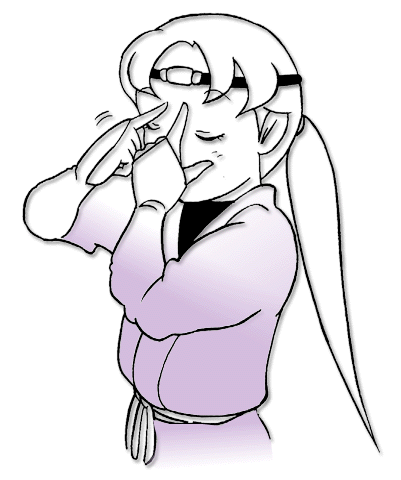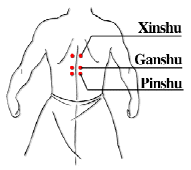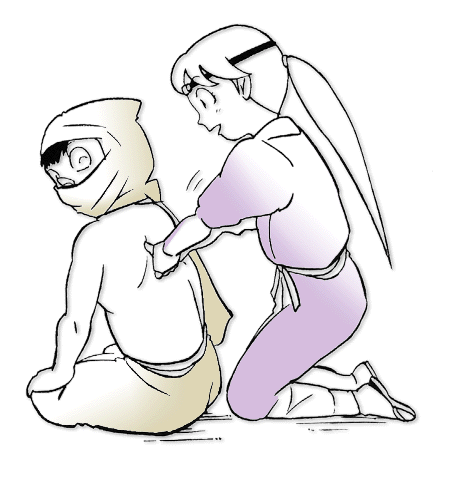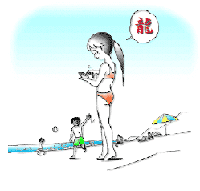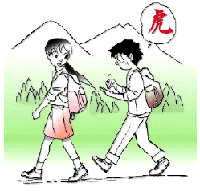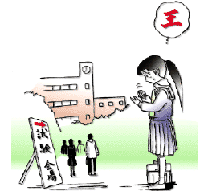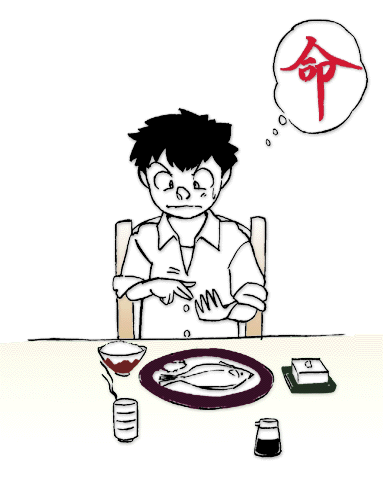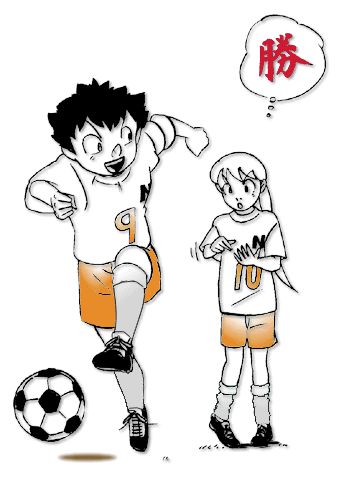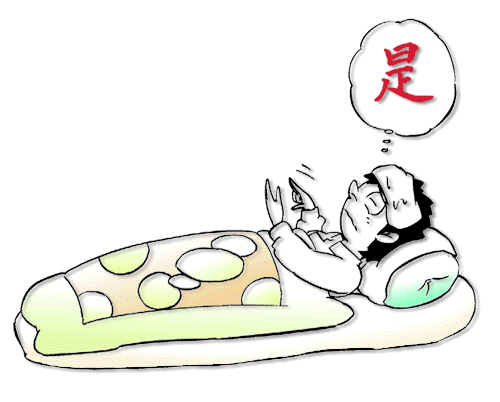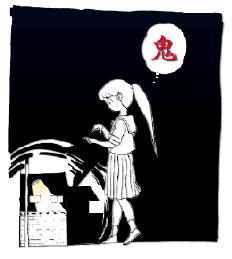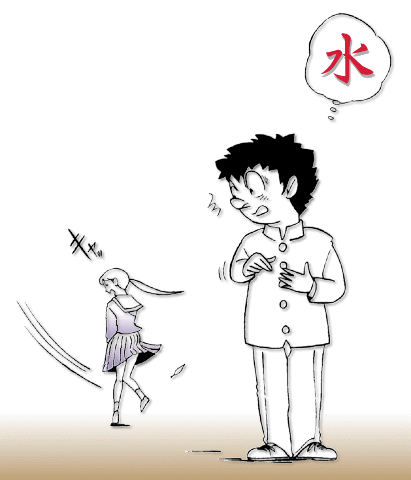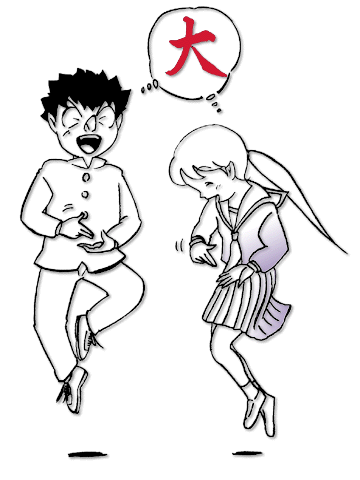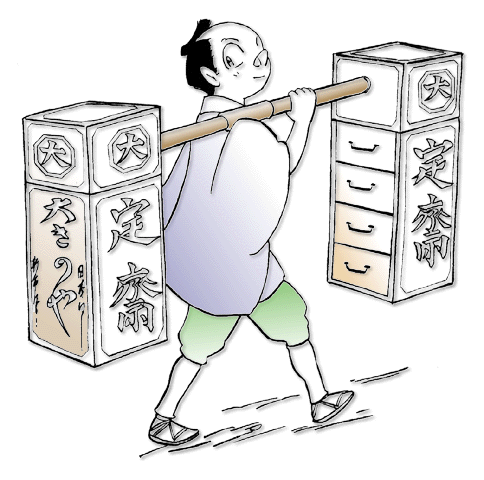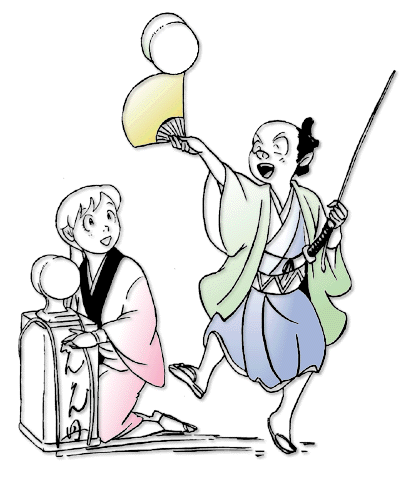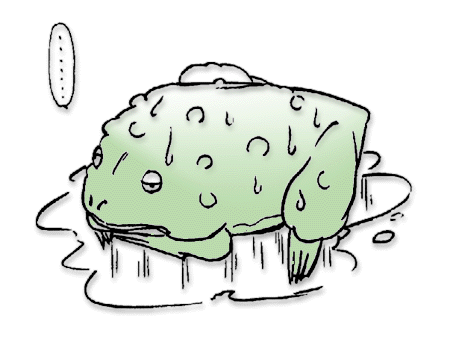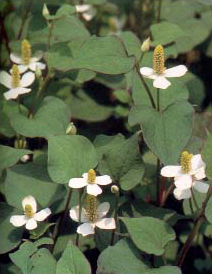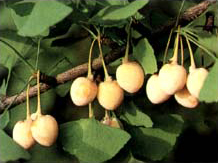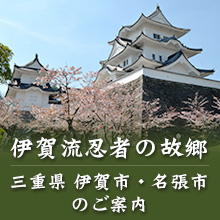Health is a common topic of TV programs. Japanese life expectancy is increasing and the population aging, and interest in health matters is growing. Despite their harsh training and superhuman skills, ninja too were human and had to stay in shape. Consequently the ninja were extra careful about their health. Since the healthy eating habits of the ninja have already been described, this time we will focus on “doin-jutsu”, the method of healthy living of the ninja.
In Japanese, “indo o watasu” refers to the act of addressing the soul of the recently deceased. The characters and syllables of “doin” are the reverse of “indo”, and the word means the opposite, i.e. life giving.
Stimulating the tips of the body constitutes the basis of doin-jutsu. Stimulating the fingers, toes and ears, which are the tips of the body, is supposed to have the effect of improving the functioning of the internal organs.
Massage the first finger joint with a twisting motion. If this is painful, it indicates the presence of disease in some part of the body. Grip two walnuts in the palm of the hand and roll them around in order to stimulate the hand.
Having a young woman massage the palm of your hand also relieves fatigue and has the additional effect of restoring youth.
Warm your hands by rubbing them together, then massage your ears. Squeezing and pinching is also effective.
Twist the big toe vigorously. “Shiatsu” or acupressure (fingertip massage) and standing on a curved object such as a small piece of bamboo are good for the arch of the foot, and have the effect of relieving fatigue.
The abdomen is the center of the body, and this area was stimulated using needles inserted at special points.
Inserting too far or in the wrong place, however, could be fatal, and the fact that the ninja nevertheless used this form of therapy reflects how much knowledge and ability they had. The basis for these techniques was Chinese medicine.
Medicine is something you take once you are sick, but the ninja took constant care of their health by practicing doin-jutsu. The basic techniques of doin-jutsu are simple, so why not try them yourself.
